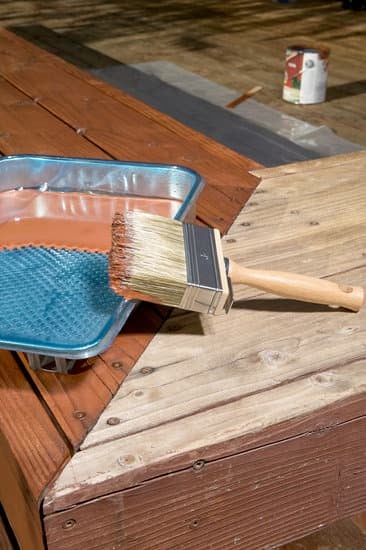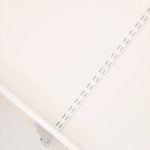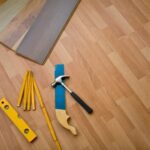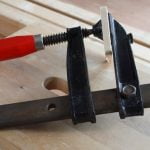Explaining the importance of accurately measuring angles in home improvement projects is crucial for ensuring the success and safety of the overall project. Inaccurate angle measurements can lead to compromised structural integrity, uneven surfaces, and ill-fitting fixtures. This article will guide you through the process of measuring angles in various DIY projects and provide practical tips for achieving precision.
When embarking on a home improvement project, whether it’s installing cabinets, framing walls, or laying flooring, understanding and measuring angles correctly is essential. Different types of angles, such as acute, obtuse, right, straight, and reflex angles, are commonly encountered in DIY projects. Knowing how to measure these angles accurately is fundamental for achieving professional-looking results and avoiding costly mistakes.
Mastering the art of angle measurement involves not only using the right tools but also understanding the basic concepts of angles. From selecting the appropriate tools for specific projects to comprehending different types of angles and their applications in home improvement, this article will provide comprehensive guidance for homeowners and DIY enthusiasts. Let’s dive into the essential tools needed for accurate angle measurement and delve into the world of angle measurements in home improvement projects.
Tools Needed
When undertaking home improvement projects, accurate angle measurement is crucial to ensure proper alignment and fit. To achieve this precision, it is essential to have the right tools at your disposal. The following are some of the essential tools required for measuring angles in various DIY projects:
1. Protractor: This tool is commonly used to measure and draw angles. It consists of a semi-circular disk with degree markings, allowing users to align it with the object being measured to obtain an accurate angle reading.
2. Angle Finder: An angle finder, also known as a digital protractor, utilizes digital technology to measure angles with high accuracy. It can be particularly useful when dealing with complex angles or when exact measurements are required.
3. Combination Square: A combination square is a versatile tool that can be used for multiple purposes, including measuring and marking precise angles. It consists of a ruler and a head that can be adjusted and locked at different angles.
Selecting the right tools for a specific project is crucial in ensuring accurate measurements and successful outcomes. Here are some tips on choosing the appropriate tools:
– Consider the complexity of the project: For simple angle measurements, a traditional protractor may suffice, while more intricate projects may require the use of an angle finder or combination square.
– Accuracy requirements: Evaluate the level of precision needed for the project. If high accuracy is essential, investing in a quality angle finder or combination square may be beneficial.
– Ease of use: Choose tools that you are comfortable using and that suit your level of expertise.
| Tool | Description |
|---|---|
| Protractor | A semi-circular disk with degree markings used to measure and draw angles. |
| Angle Finder | A digital protractor that utilizes technology to measure angles accurately. |
| Combination Square | A versatile tool consisting of a ruler and an adjustable head for measuring precise angles. |
By employing the right tools and following proper techniques, homeowners and DIY enthusiasts can ensure that their home improvement projects are carried out with precision and efficiency.
Understanding Angles
In home improvement projects, understanding the basics of angles is crucial for achieving precision and accuracy. Whether you are working on installing trim work, measuring roof pitch, or determining the slope for stairs, having a clear grasp of angles is essential. This section will delve into the fundamental concepts of angles, including acute, obtuse, right, straight, and reflex angles, providing readers with a comprehensive understanding of these geometric elements.
To make it easier for readers to grasp the concepts of different angle types, let’s break down each category:
- Acute Angle: An acute angle is an angle that measures less than 90 degrees. It is commonly encountered in various DIY projects such as cutting precise miter angles for corner joints.
- Obtuse Angle: An obtuse angle is an angle that measures more than 90 degrees but less than 180 degrees. Understanding this type of angle is important when working on projects that involve the installation of sloped surfaces or inclined planes.
- Right Angle: A right angle measures exactly 90 degrees and is often encountered in tasks such as ensuring perpendicular alignment in framing or woodworking projects.
- Straight Angle: A straight angle measures exactly 180 degrees and can be seen in situations where a line needs to be extended without deviation.
- Reflex Angle: A reflex angle measures between 180 and 360 degrees and may come into play when dealing with complex roof structures or irregular shapes in home improvement projects.
By illustrating these concepts with diagrams and real-life examples, readers will gain a better understanding of how different angles manifest in their DIY endeavors. With this knowledge at their disposal, they can approach angle measurement tasks with confidence and accuracy.
Measuring Techniques
One of the most common tools for measuring angles in home improvement projects is a protractor. A protractor is a semi-circular device with degree markings that allows for precise angle measurements. To measure an angle using a protractor:
Step 1: Positioning
First, place the center hole of the protractor over the vertex of the angle, ensuring that the baseline aligns with one side of the angle.
Step 2: Alignment
Next, align the other side of the angle with the degree scale on the protractor. Make sure that the starting point (0 degrees) on the protractor lines up with one side of the angle, and then read the measurement where the second side intersects with the degree scale.
Step 3: Recording
Finally, record and note down the measurement as either acute, obtuse or right angle. If necessary, repeat this process for multiple angles in your project to ensure accuracy.
Measuring Angles With an Angle Finder
An angle finder is another essential tool that provides accurate readings for both inside and outside angles. To measure an angle using an angle finder:
Step 1: Placing
Place one arm of the angle finder against one side of the corner and adjust it until it lays flat against one edge.
Step 2: Reading
Read and record from its digital display or analog gauge. Some models also feature a locking mechanism to keep it in place while taking measurements.
Using these techniques properly can result in precise and accurate measurements, which are crucial for any successful home improvement project.
Common Angle Measurements in Home Improvement
When undertaking home improvement projects, it is crucial to have a clear understanding of common angle measurements to ensure the accuracy and precision of the work being done. Whether it’s miter cuts for trim work, measuring roof pitch, or determining the slope for installing railings or stairs, having a firm grasp of these angles is essential for achieving professional results.
In this section, we will explore the typical angles encountered in various home improvement projects and discuss how to measure them effectively.
Miter Cuts for Trim Work
Miter cuts are commonly used in woodworking and carpentry for creating clean and seamless joints in trim work. These cuts are made at an angle other than 90 degrees to allow the pieces of trim to fit together seamlessly around corners or edges.
To accurately measure miter angles, a protractor or combination square can be used to determine the exact angle needed for the cut. It is important to position the tool correctly and double-check the measurement before making any cuts to ensure precision.
Measuring Roof Pitch
Measuring roof pitch is crucial for anyone working on roofing projects or installations. The roof pitch refers to the steepness of a roof and is typically measured in terms of rise over run.
A pitch gauge or angle finder can be used to accurately measure the slope of a roof by placing the tool on the surface and adjusting it until it aligns with the pitch angle. This measurement is vital for determining suitable roofing materials, calculating drainage requirements, and ensuring structural integrity.
Determining Slope for Installing Railings or Stairs
When installing railings or stairs, determining the appropriate slope or angle is essential for safety and functionality. The proper slope ensures that individuals can navigate stairs comfortably and safely while maintaining balance. Similarly, railings must be installed at an angle that provides sufficient support and stability. Using an angle finder or level, one can measure and adjust the slope as needed during installation to meet safety standards and building codes.
Understanding these common angles encountered in home improvement projects is fundamental for anyone embarking on DIY tasks or professional renovations. By utilizing precise measurement techniques using appropriate tools such as protractors, angle finders, and combination squares, individuals can achieve accurate results in their projects.
Troubleshooting and Correcting Mistakes
When it comes to home improvement projects, measuring angles accurately is crucial for ensuring a seamless and professional finish. However, there are common challenges and mistakes that can arise when measuring angles, which may lead to errors in the project if not addressed properly. It’s important to be aware of these potential pitfalls and have practical solutions at hand to rectify any mistakes. Here are some troubleshooting tips for addressing common challenges when measuring angles in home improvement projects:
1. Incorrect tool selection: One of the most common mistakes when measuring angles is using the wrong tool for the job. For example, using a protractor instead of an angle finder for complex angles or using a combination square with an inaccurate scale. To avoid this mistake, always assess the specific requirements of your project and choose the appropriate tool accordingly.
2. Inaccurate positioning: Improper placement of the angle measurement tool can result in inaccurate readings. When measuring angles, ensure that the tool is positioned flush against the surface or corner where the angle is being measured. Use clamps or other securing mechanisms if necessary to maintain proper alignment and prevent any movement during measurement.
3. Non-standard measurements: In some cases, standard measurement techniques may not be applicable due to unique or irregular angles in home improvement projects. When faced with non-standard measurements, consider alternative approaches such as using a level and straightedge to create reference lines or employing digital angle finders for precise measurements in unconventional spaces.
By being aware of these common challenges and having practical solutions at hand, DIY enthusiasts can overcome potential mistakes when measuring angles in their home improvement projects and achieve accurate results.
Application of Angle Measurements
When it comes to home improvement projects, the accurate measurement of angles is crucial for ensuring the success and quality of the final outcome. Whether it’s installing trim work, building custom cabinets, or constructing outdoor structures, understanding and measuring angles correctly can make a significant difference in the overall appearance and functionality of the project.
In this section, we will delve into real-life examples that highlight how precise angle measurements have contributed to the success of various home improvement endeavors.
One common application of accurate angle measurements in home improvement is in the installation of crown molding or baseboards. These decorative elements often require miter cuts at specific angles to ensure seamless joints and a professional finish.
Without precise measurements and cuts, the end result can be visibly flawed and compromise the aesthetic appeal of the room. By showcasing before-and-after photos of improperly installed moldings next to those installed with accurately measured angles, readers can visually appreciate the impact of precision in angle measurements.
Another example where precise angle measurements are vital is in roofing projects. Determining the correct pitch and slope of a roof requires accurate measurement techniques to ensure proper water drainage and structural integrity. Showcasing images of roofs with incorrect slopes leading to water pooling issues compared to properly sloped roofs can effectively convey how angle measurements directly impact functionality in home improvement projects.
Furthermore, accurate angle measurements play a critical role in determining the proper stair or railing angles for indoor or outdoor installations. Incorrectly measured angles can result in safety hazards and structural weaknesses, making it essential for DIY enthusiasts to grasp the significance of measuring techniques when working on such components.
By highlighting these real-life examples as well as providing before-and-after visuals, readers gain a deeper understanding of how mastering angle measurement techniques directly contributes to successful home improvement projects.
| Home Improvement Project | Impact of Precision Angle Measurements |
|---|---|
| Crown Molding Installation | Seamless joints, professional finish |
| Roofing Projects | Proper water drainage, structural integrity |
| Stairs & Railings Installation | Safety, structural stability |
Conclusion
In conclusion, accurately measuring angles is an essential skill in home improvement projects that cannot be overlooked. The potential consequences of not doing so can lead to costly mistakes and compromised structural integrity.
Through the use of tools such as protractors, angle finders, and combination squares, DIY enthusiasts can ensure precise measurements for a wide range of angles encountered in various projects. Understanding the basics of angles, including acute, obtuse, right, straight, and reflex angles, is crucial for mastering angle measurement techniques.
By providing step-by-step instructions on how to measure angles accurately and discussing the proper positioning and alignment for precision, this blog post has equipped readers with valuable knowledge that can be applied to their future home improvement endeavors. With real-life examples and practical troubleshooting tips included in this article on how to measure an angle home improvement becomes accessible and achievable for readers at all levels of expertise.
Mastering the art of measuring angles is not only about achieving a professional finish; it also contributes to the safety and functionality of home improvements. From miter cuts for trim work to determining roof pitch or installing railings and stairs with precision measurement techniques will undoubtedly have a positive impact on the outcome of any project.
Readers are encouraged to apply the knowledge gained in this blog post to their future DIY projects and seek out additional resources for further learning if needed. By honing these skills, they can take pride in their workmanship and enjoy successful outcomes in their home improvement endeavors.
Frequently Asked Questions
How to Measure an Angle?
To measure an angle, you can use a protractor. Place the midpoint of the protractor on the vertex of the angle, align one side with the 0-degree mark, and read the measurement where the other side intersects.
How Do You Measure Right Angle Construction?
Right angle construction can be measured using a square or a carpenter’s square. Place the corner of the square at the vertex of the angle and align one arm with one side of the angle to ensure it is exactly 90 degrees.
What Is the Formula Used to Measure Angle?
The most common formula used to measure an angle is θ = l/r, where θ represents the angle in radians, l is the length of the intercepted arc, and r is the radius of the circle containing the arc. This formula is based on basic trigonometry concepts.

I’m thrilled to have you here as a part of the Remodeling Top community. This is where my journey as an architect and remodeling enthusiast intersects with your passion for transforming houses into dream homes.





